An insider’s guide to Stockholm’s secret design spots
The Local spent a day with Stockholm-based interior architect Elena Ramirez, exploring the design gems it’s taken her seven years to curate.

Elena Ramirez has a keen eye for beautiful things. The Spanish interior architect, who designs window displays for Swedish retailer H&M, has been in Stockholm since 2012 when she came to study at Sweden's University of Arts, Crafts and Design. She fell for the city (and her Swedish fiancé) and soon enough Stockholm became home.
The last seven years have been a journey of discovery for Elena. If Swedish interior design - which is popular the world over thanks to the likes of IKEA, furniture designer Bruno Mathsson and textile designer Stig Lindberg - is chalk, then Spanish interior design is cheese.
Elena Ramirez
“In Spain, people don’t spend time inside. There’s a lot of black and grey terasso and the furniture is very thick - you inherit things from your family but things you don’t want. Your mum would come after you if you don’t keep it! It’s very different here in Sweden,” Elena tells The Local.
READ ALSO: An architect's guide to Gothenburg
Suburban design
Elena suggests getting out of the city centre and into the suburbs to seek out everyday Swedish design. Where the locals live, where they eat and drink and socialise, is where you’ll find a more authentic design experience.
Telefonplan, a suburb to the southwest of Stockholm, was developed in the 1950s to house workers at the then-nearby Ericsson factory. Purpose-built apartment blocks in ochre yellow, mint and pink, known as funkis, line the wide, straight (and impeccably clean) streets.
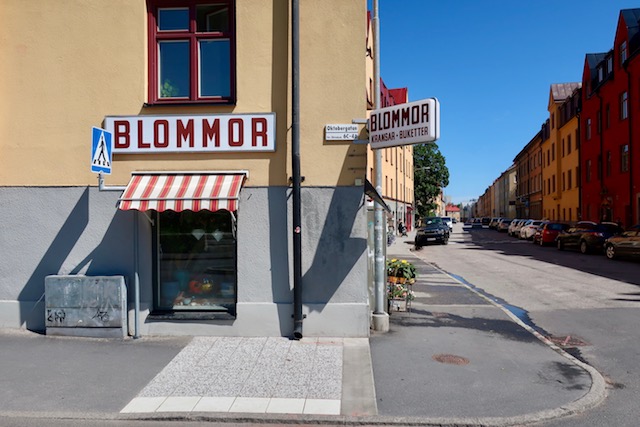 Flower shop in Midsommarkransen
Flower shop in Midsommarkransen
On the corner of Valborgsmässovägen, a two-minute walk from Telefonplan metro station, is AB Café, a popular neighbourhood cafe owned by two local interior architects.
“It’s a very nice local cafe,” says Elena. “I think many people from the area congregate here. In summer, it has a lot of outdoor space so people sit on the grass and benches. In winter, it’s super cosy.”
It’s quintessentially Swedish, she notes, down to the trays the sandwiches are served on and the ceramics out of which you drink your coffee.
“There are a lot of little details. It’s a good place to get a feel for a typical Stockholm suburb. The decor is typically Swedish. A lot of leather with wood, warm tones and plenty of greenery.”
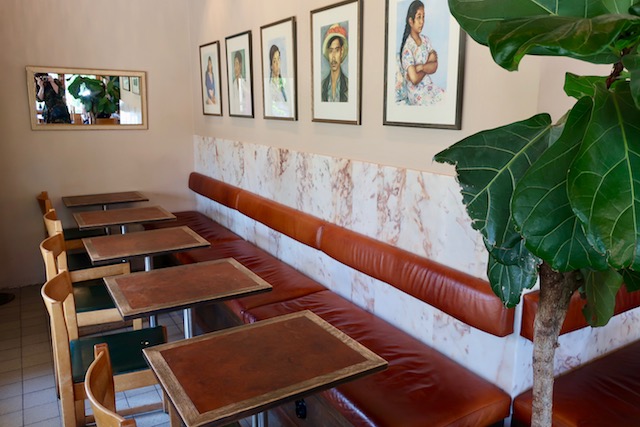 AB Café in Telefonplan
AB Café in Telefonplan
READ ALSO: A fashion entrepreneur's tips for design-hungry travellers in Northern Sweden
Although Elena describes AB Cafe as “typically Swedish”, she admits that Swedish interior design has become somewhat harder to define in recent years. There are still traces of the pared-down monochrome aesthetic that the world classes as ‘Scandinavian’ but in recent years Swedish design has begun to evolve.
“You can go many ways,” says Elena. “You have the typical white walls, grey couch, very black and white and minimalistic. For me, Swedish design is the layer on top of that. Like the warmth of the textiles and when people work their interiors a bit more. I think a lot of people are evolving now and they are a bit bored of muted tones.”
Combining retro furniture with people-sized plants and other modern touches, AB Café exemplifies this emerging interior trend. It’s what Elena describes as “Scandinavia but also loppis world”, referencing the many loppisar (flea markets) that pop up across Sweden in the spring and summer.
 På andra våningen in Midsommarkransen
På andra våningen in Midsommarkransen
På andra våningen, a beautifully-arranged and carefully-curated second hand shop, is a short walk from AB Café. Elena’s a regular and greets owner Rickard, who is enjoying the Stockholm sun seated in a bamboo chair on the sidewalk, with a friendly hug.
“The character of someone influences how they design,” she comments, after. “Warm people like warm spaces, they appreciate certain details.”
The store is a modern, fresh space on the corner of a residential road. The plain walls and floor let the goods take centre stage. A vintage Gucci umbrella hangs from the ceiling; the whole store is a thoughtfully-displayed jumble with splashes of Svenskt Tenn and colourful Swedish porcelain.
Each piece, Rickard explains, has been personally picked by him or his wife. The couple frequent house clearances, flea markets, auctions in the countryside and Stockholm-based auction house Bukowski’s. The selection is also available online and ships internationally - “90 percent goes abroad,” he says.
 På andra våningen in Midsommarkransen
På andra våningen in Midsommarkransen
READ ALSO: A fashion designer's guide to Stockholm's most stylish spots
Stroll around Södermalm
A short journey on the metro and you’ll arrive on Södermalm, an island best known for its independent stores and cafes, retro clothes shops and, admittedly, a few hipsters.
Wherever hipsters dwell, there tends to be a lineup of book shops that would sate even the most selective readers and Södermalm doesn’t disappoint. Independent bookstore Konst-ig (a play on words: konst meaning art, konstig meaning strange) specialises in art, design, architecture and photography. And with its boxy display cabinets and hand-sketched wall art, it really looks the part, too.
“I love the selection. It’s always peaceful to come here. It’s never too packed and very calm. I like the way they curate things and you often discover things you won’t find online,” Elena says while flicking through a book on local Stockholm ateliers.
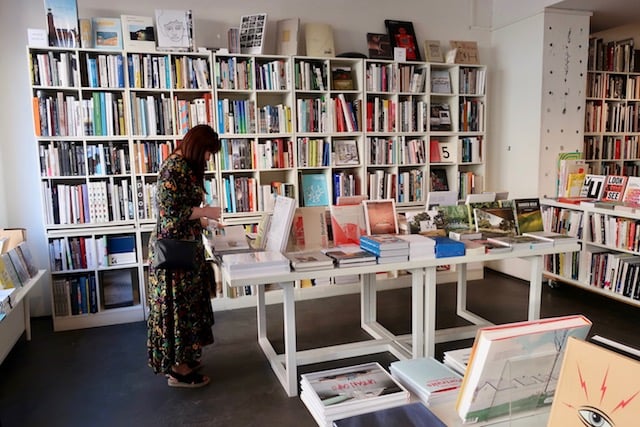 Elena browsing books in Konst-ig
Elena browsing books in Konst-ig
Stroll from Konst-ig to nearby Steinsland Berliner gallery, a small independent art gallery on Bondegatan. Natural light floods in to the spartan space through near-floor-to-ceiling windows. It’s artsy but not pretentious with an exciting programme of emerging Scandinavian artists.
“I think it’s interesting to explore Swedish art on a smaller scale,” says Elena. “If you only go to the big galleries, they only display artists that are already big. It’s important to find fresh emerging talent.”
 Steinslands Berliner Gallery
Steinslands Berliner Gallery
On to a spot of lunch at Savant Bar, a cafe and natural wine bar on Tegnérgatan in Norrmalm. It’s thoroughly Stockholm: chic but not fancy, rustic but still slick. The decor is typically Swedish in two senses of the expression: it’s both cool and entirely recycled, explains bar owner Markus Welin.
“Our whole bar is built on sustainability,” he says. “There’s no plastic, we’ve done everything with pre-used materials. All the wood is from an old house up north and all the metal is from old exhaust pipes. We’ve taken these things and given them a new perspective.”
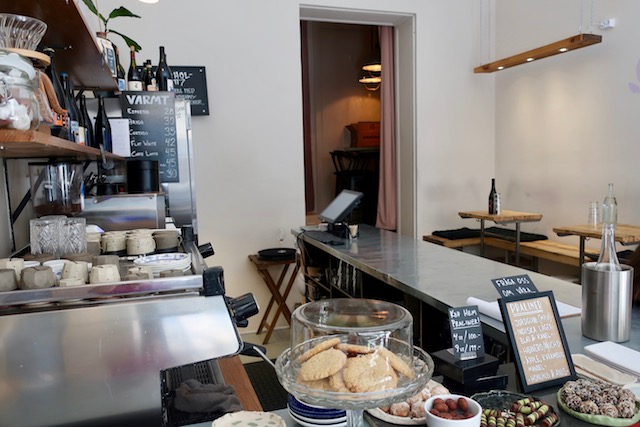 Savant Bar
Savant Bar
To wind up the day, a wander around the recently refurbished National Museum. Sweden’s museum of art and design displays over 5,000 pieces of art from six centuries. The 150-year-old building, designed by Prussian architect Friedrich August Stüler (who designed Berlin’s Neues Museum), is well worth a visit in itself.
The last stop of the day is 'Stockholm’s most intricately-designed restaurant', conveniently located in the National Museum. Some of Sweden’s leading designers have come together to furnish and design the space under the management of Swedish designer Matti Klenell. The restaurant is both functional and attractive - two salient qualities of Swedish design - and the product of collaboration, which is a cornerstone of Swedish society.
READ ALSO: An industrial designer's guide to Malmö's thriving design scene
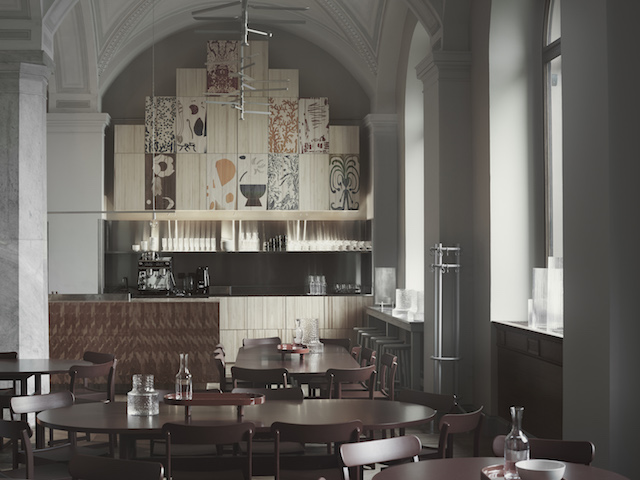 Photo: National Museum/Pia Ulin
Photo: National Museum/Pia Ulin
“It’s a very good representation of how different artists who have been invited to collaborate have created a warm space full of details,” says Elena, sipping a locally brewed beer. “Everything, even the ceramics, have been specially created for the restaurant. It’s a space for everyone.”
This content was produced by The Local Creative Studio and sponsored by Visit Sweden.
This content was paid for by an advertiser and produced by The Local's Creative Studio.

Join the conversation in our comments section below. Share your own views and experience and if you have a question or suggestion for our journalists then email us at [email protected].
Please keep comments civil, constructive and on topic – and make sure to read our terms of use before getting involved.
Please log in here to leave a comment.